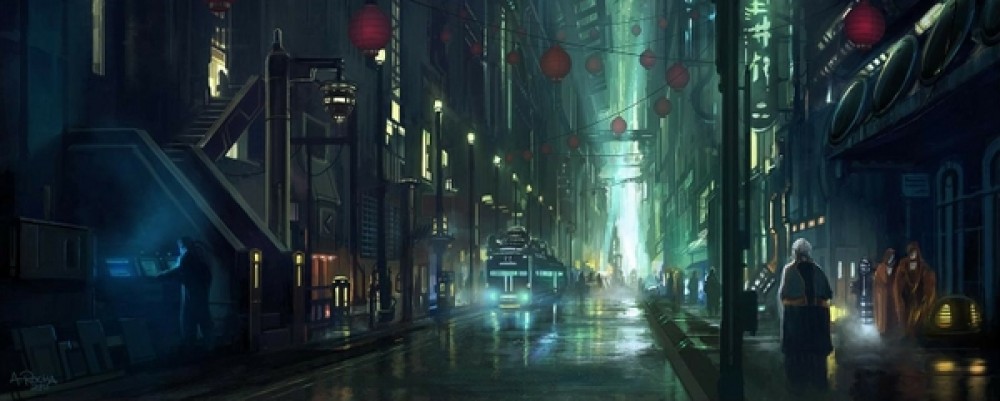Night Broken by Patricia Briggs (pub. March 2014)
Other titles in the series (earliest to most recent): Moon Called, Blood Bound, Iron Kissed, Bone Crossed, Silver Borne, River Marked, Frost Burned
Night Broken is the latest adventure in the immensely popular Mercy Thompson series by Patricia Briggs. There are a lot of reasons that Briggs is consistently named as one of the best urban fantasy writers out there: her characters are fascinating, her plots intricate and complex, and the world in which her novels take place, while teeming with supernatural beings that (as far as we know) don’t really exist, is still so recognizably our own, fraught with post-9/11 political and racial tensions. Night Broken is certainly no exception.
Fair warning: Some mild spoilers
Mercedes Thompson Hauptman, who goes by Mercy, is a Native American coyote walker–a daughter of Coyote who shapeshifts into a coyote. She is not a werecoyote, subject to the phases of the moon; her nature is much different the weres. Her husband, Adam Hauptman, is the Alpha of a werewolf pack, and Mercy is his mate. This causes a lot of tension with some members of the pack, who don’t think much of coyote walkers. At this point in the series, however, Mercy has won most of them over with her bravery and fighting skills, though there are still some holdouts who simply won’t accept her as either a packmate or as their Alpha’s mate. So there’s some tension there.
Night Broken begins with a desperate phone call from Adam’s ex-wife, Christy, who wants protection from a dangerous stalker who has already killed someone. Despite her best judgment, Mercy allows the manipulative woman–who still very much carries a torch for Adam, and retains the support of several of the pack members who don’t like Mercy–to move into their home so the pack can protect her. From the moment she arrives, Christy schemes, manipulates, interferes, colludes, and otherwise does her damnedest to get between Adam and Mercy. I was afraid Briggs was going to fall victim to the cliche of having Mercy think Adam was interested in Christy again and get angry and then they have to make up and blah blah blah, but of course she doesn’t, because she’s Patricia Briggs and Patricia Briggs doesn’t do cliches.
The stalker problem quickly spirals out of control when it becomes apparent that Christy’s spurned lover, who happens to be an arsonist and cold-blooded murderer as well, turns out not be human. He’s like nothing that Mercy, her pack, or anyone she knows has ever encountered–and is the mostly deadly adversary that they have ever faced.
Mercy and Adam end up facing CNTRP (referred to as Cantrip) again–the shady government agency dedicated to investigating supernatural beings (and responsible for kidnapping and torturing them). The ever-present threat of being arrested by Cantrip, to disappear into Gitmo, or worse, is definitely shades of post-9/11 Homeland Security. It’s good, old-fashioned racism; the same ignorance, fear, and hatred faced by minorities in our own world is heaped upon the weres and the fae–the latter of which are actually on a reservation, and the former many Cantrip agents would like to round up and shoot. This is a common theme in many urban fantasy series–it doesn’t take much imagination to envision that a world populated by supernatural creatures like skinwalkers, fae, weres, vampires, and so forth would be one where all of those groups would face serious racism. In fact, I’d argue that books that don’t deal with that issue are unrealistic–and not in the any of the ways that make urban fantasy so great.
There’s are several subplots. One involves the mysterious walking stick that has appeared in a number of other Mercy Thompson books. Another involves Coyote himself, as well as another of his offspring, and a third very minor one involves the vampires Wulfe and Stefan. It’s really more of a cameo that seems to be included solely to set up the ending, which is perhaps my one critique of the book: it’s a kind of vampire ex machina that causes me to downgrade my rating by half a stake. It clunks a little, which could have been avoided if Briggs had incorporated the vampire subplot a little more extensively.
All in all, Night Broken is everything that fans of Patricia Briggs and Mercy Thompson have come to expect: exciting, emotional, sensual, fun, enlightening, and fantastic.
My Rating: 4.5 out of 5 stakes


